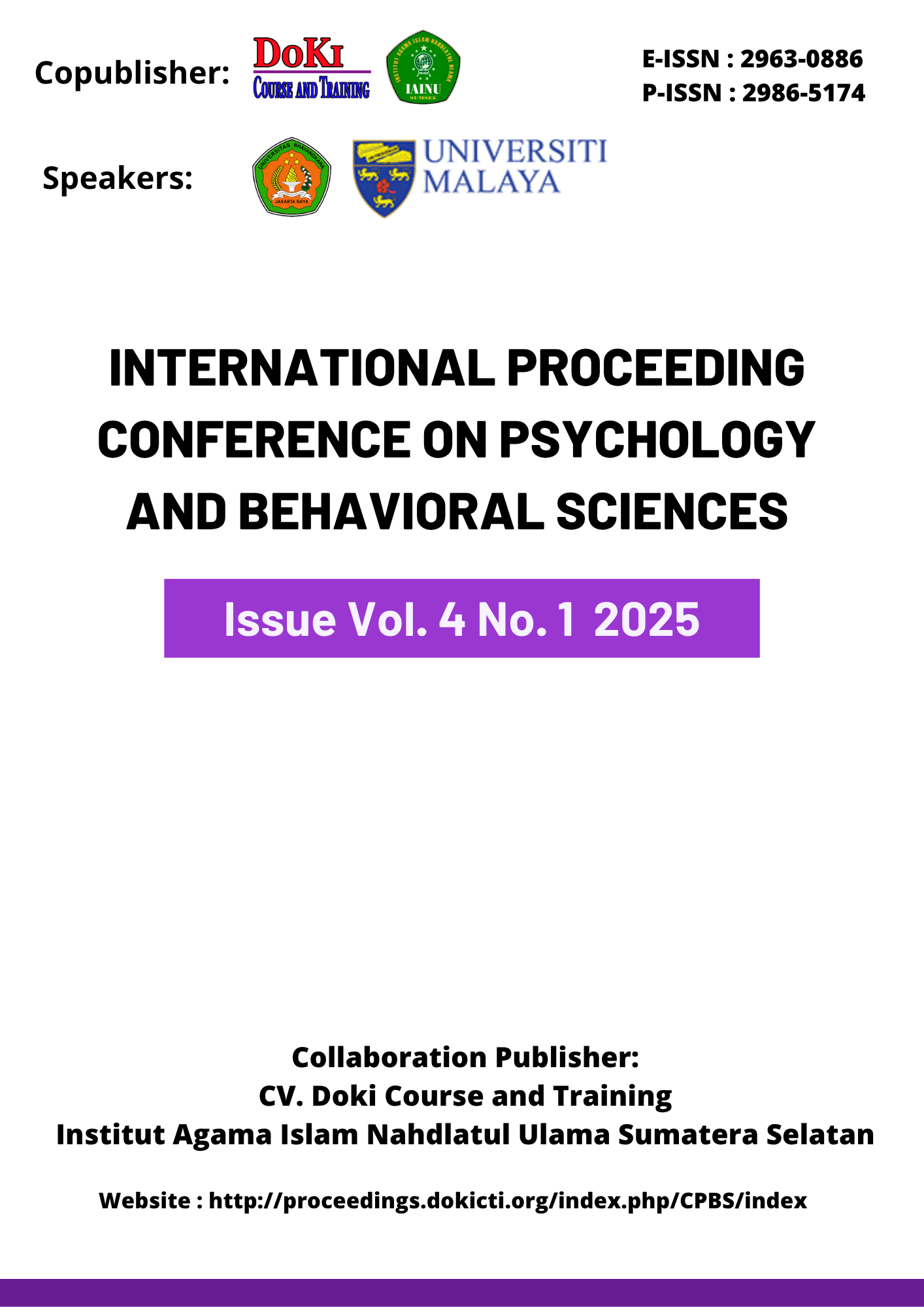The Impact of Dhikr on Mental Clarity And Stress Reduction In Final-Year Grade Student
DOI:
https://doi.org/10.61994/cpbs.v4i1.210Keywords:
Mental health, Stress, Students, Dhikr, Dhikr therapyAbstract
Final-year students often experience high academic pressure, such as completing their thesis, meeting graduation requirements, and preparing for the job market. This pressure can affect their mental clarity and overall well-being. This study employed a quantitative method with a one-group pretest-posttest experimental design to examine the effectiveness of dhikr therapy in reducing stress and enhancing mental clarity. A total of 25 final-year students participated in the dhikr intervention, and the data were analyzed using the Wilcoxon Signed-Rank Test. The results showed a significant reduction in stress levels after the intervention (p = 0.001). Dhikr acts as both a spiritual practice and a relaxation technique that fosters inner peace and emotional regulation. Therefore, dhikr is proven to be an effective non-pharmacological psycho-spiritual intervention to support students’ mental health during academic transitions.
References
Al-Islam. 1987. Muamalah dan Akhlak, (Jakarta: PT. Rineka Cipta) Hal;187.
Friedrich, J., et al. (2023). Ph.D. students’ perspectives on mental health and stress in academia. PLOS ONE, 18(7), e0288103. https://doi.org/10.1371/journal.pone.0288103
Hanna Djumhana Bastaman. 2001. Integrasi Psikologi dengan Islam, (Yogyakarta: Pustaka Pelajar, cet. III) hal;158
Hazri Adlany.dkk. 2002. Al-Qur'an Terjemah Indonesia, (Jakarta: Sari Agung) hal;470.
Houghton, J.D., Wu, J., Godwin, J.L., Neck, C.P. & Manz, C.C. (2012). Effective stress management: A model of emotional intelligence, self-leadership, and student stress coping. Journal of Management Education, 36(2), 220-238.
Kajiro Nakamura, Gnazan ana rrayer, Aun panasa, Uzair rauzan. 2005. metode zikir dan Doa Al-Ghazali, (Bandung: Arasy Mizan, hal;79.
KH. Aqil Said Siroj. 2006. Tasawuf Sebagai Kritik Sosial Mengedepankan Islam Sebagai Inspirasi Bukan Aspirasi, (Yayasan SAS).
Khodarahmi, S., Hashim, I.H., & Mohd-Zaharim, N. (2012). Perceived stress, positive-negative emotions, personal values and perceived social support in Malaysian undergraduate students. International Journal of Psychology and Behavioral Sciences, 2(1), 1-8.
Kim, Y., Khil, J., Seo, W., & Keum, N. (2022). The Effects of Mindfulness and Buddhist Meditation Coaching on Mental Health Outcomes in College Students. Evidence-Based Complementary and Alternative Medicine, 2022. https://doi.org/10.1155/2022/8178930
Lazarus, R. S. (2000). Stress and Emotion: A New Synthesis. New York, NY: Springer.
Manz, C.C. (2003). Emotional Discipline: The Power to Choose How You Feel. San Francisco, CA: BerrettKoehler.
Maslahat, M. M., & Laila, V. N. (2022). Dhikr therapy in the treatment of anxiety disorders in adolescents. Psikis: Jurnal Psikologi Islami, 8(1), 1-7.
Pargament, K. I., et al. (2000). The many methods of religious coping: Development and initial validation of the RCOPE. Journal of Clinical Psychology, 56(4), 519–543.
Reza, I. F., Siregar, S. A., Aulia, N. et al. (2021). Dhikr as psychotherapy to overcome academic stress of Muslim youth. Indonesian Journal of Behavioral Studies, 1(1).
Rizki, D. H., Saefa, C. A. M., et al. (2024). Effectiveness of Dhikr Relaxation Therapy to Reduce Academic Stress in Freshmen FY 2023. Proceeding Conference on Psychology and Behavioral Sciences, 3(1), 205-212.
Roddenberry, A., & Renk, K. (2010). Locus of control and self-efficacy: potential mediators of stress, illness, and utilization of health services in college students. Child Psychiatry & Human Development, 41(4), 353-370.
Salam, A., Yousuf, R., Bakar, S.M.A., & Haque, M. (2013). Stress among medical students in Malaysia: A systematic review of literatures. International Medical Journal, 20(6), 649-655.
Walburg, V. (2014). Burnout among high school students: A literature review. Children and Youth Services Review, 42, 28-33.
Yasin, M.A.S.M. & Dzulkifli, M.A. (2011). Differences in depression, anxiety and stress between low-and high achieving students. Journal of Sustainability Science and Management, 6(1), 169-178.
Downloads
Published
Issue
Section
License
Copyright (c) 2025 Rifdatul Rizkia, Diana Putri Ayu Entika, Zahra Amalia Putri, Dessy Rifani Putri, Hidayah Indriati Wibisono, Muhammad Hafizh Hidayatullah

This work is licensed under a Creative Commons Attribution-NonCommercial 4.0 International License.



